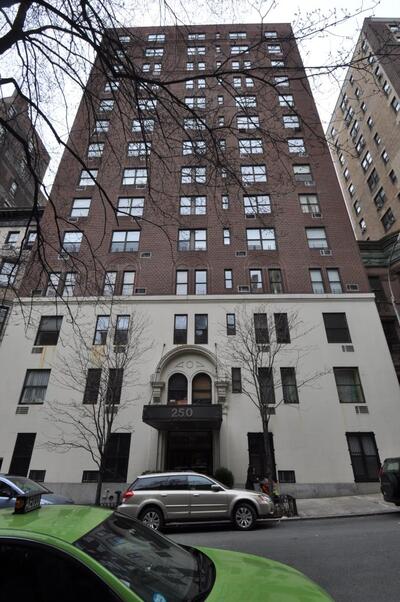HABITAT
UWS Co-op Overcomes One-Two Punch Thanks to Smart Fiscal Planning
Tom Soter in Bricks & Bucks

A freak electrical fire broke out in a ground-floor apartment. Firefighters hosed the apartment down but, because it adjoined the lobby, the entire entrance area was wrecked. "The firefighters pumped water into the apartment and up into the ceilings. There was water everywhere; it even came down through the light fixtures," recalls Wall. Such damage would have been bad under any circumstances, but it was worse because, in the last three months, the lobby had just been redesigned, and at considerable expense. Disturbed but not defeated, the board repaired and then renovated the lobby (again) with money primarily from its insurance policy and also from the reserves.
After an inspection of the nearly 100-year-old building's facade as part of Local Law 11 requirements in 2012, the board hired a contractor to perform the necessary repair work. "It wasn't starting expensive but it finished expensive," notes the co-op's attorney, James Samson, a partner at Samson Fink & Dubow.
"There were cracks in the facade that had to be repaired," explains Wall. "Once the contractor got up there, he saw that there were more things to repair than were initially indicated." And more things meant more expense. But the co-op was prepared, having a reserve fund sufficient for the task.
The board then undertook a long-deferred project to replace the property's 650 windows, which dated from 1982. "The windows were in bad shape," explains Wall. "The shareholders had been asking for them to be replaced at every annual meeting, but we never felt comfortable doing it because it was so expensive."
Once the job was underway, the contractor, Kelly Windows, encountered trouble and delays caused by the nearly 30 specially reinforced and building code-required "lot line" windows. The drywall surrounding them had to be completely replaced — "which was a difficulty and a cost that we had not foreseen," Wall says. "It caused delays and greatly complicated the project."
Then there was the historical accuracy question. Located in a landmarked district, "they got all tied up with the Landmarks Preservation Commission," Samson notes. It took many months to get approval for their window work from the commission.
The window job done, the board turned to its roof. Over the years, the building had leaks in the top-floor apartments. "And serious leaks developed while we were doing the windows," observes Wall. Adds Samson: "The roof had become porous, and water leaked. Sometimes when we really had major rainstorms, it went down a couple of floors."
It soon became clear that the entire roof had to be replaced. That meant removing and storing an elaborate roof garden before any work could be done. That work is now underway, with a projected completion date of July 2015. The board used funds from its line of credit to pay for that job, and now plans to assess the shareholders at a future date to replenish the reserves.
In the end, the true test for boards is not what the challenges are, but how they face them. For as Wall notes: "You have to be prepared. You have to expect the unexpected." He pauses and then adds with the sort of ironic understatement that probably helped the board and building survive: "I'd say we've had a very busy few years."
Photo by Christopher Bride for Property Shark
For more, see our Site Map or join our Archive >>



